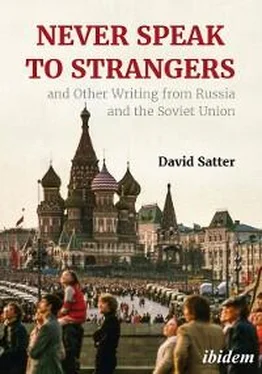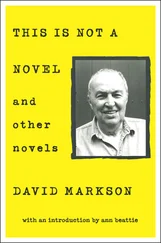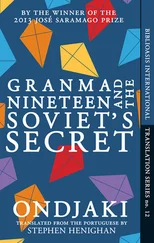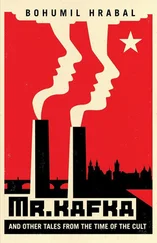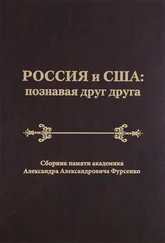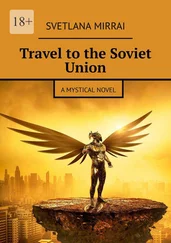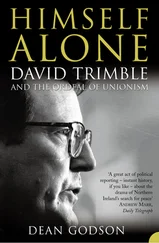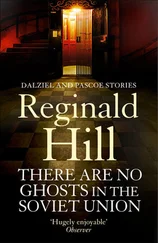The Metallurg Sanatorium, which serves Soviet engineering workers, specialises in treating cardiovascular and neurological ailments. Treatment begins at 8 a.m. each morning for half a day with special exercises, examinations, treatment, diet and trips to take the waters of the Matsesta springs.
“Wild people” who do not get a place in a sanatorium can buy a treatment entitling them to use a sanatorium clinic and its other facilities. Packages can even be purchased following a medical examination at the Sochi railway station, provided by an on duty doctor for new arrivals, just getting off the train.
Sochi grew up around the idea of organised rest, but because of the attraction to individual visitors to the Black Sea coast and the Matsesta waters, the “wild” side of life grew up along with it. Demand for places in rest homes and sanatoria in the Soviet Union is now several times greater than the supply, and no programme of major resort construction is currently under way.
Although there can be more than 600,000 visitors to Sochi at any given time during the season, there are only 200.000 rest home or sanatoria places. This shortage gives rise to the two different ways of vacation life. The difference is visible from one of the hydrofoils which regularly carry passengers between the resorts up and down the coast. From several miles out to sea, the green foothills of the Caucasus mountains form a backdrop to a chequered pattern where densely crowded beaches alternate with the beaches of the rest homes and sanatoria which appear all but empty by comparison.
The sanatoria or rest homes are inexpensive. In the Metallurg Sanatorium, the maximum cost of four days of treatment and rest costs 160 roubles (£127) of which roubles 48 (£38) is paid by the patient, the rest by his trade union. Places are frequently apportioned by an organisation on the basis of that organisation’s own needs Individuals who work in different ministries or organisations, even if they happen to be married to each other, are frequently given different packaged vacations, at different places and different times. Only about 30 per cent of those in the Sochi sanatoria or rest homes come with their families, compared with an estimated 90 per cent of these who come to Sochi under their own steam.
At the height if the season Sochi is a mix of Russians, Armenians, Georgians, Ukrainians, and Tatars, and feels like the summer crossroads of the Soviet Union. Those who cannot get places at the rest homes or sanatoria make arrangements with the private owners whose wooden cottages line the shaded by-ways and streets. Typical “wild people” live four in a room, and either reserve places by writing in advance or make arrangements on arrival with a landlady waiting at the railway station or through the nearby apartment bureau.
Sponsored visitors and the “wild people,” as well as the foreign tourists who make up a third and growing category of Sochi holiday makers, seem to co-exist happily.
Financial Times, Monday, November 7, 1977
The Price of Soviet Achievements
It has been 60 years since the Bolshevik seizure of power created out of the old Tsarist Empire a new kind of society based on a vision of progress and social justice but sustained by force. The Soviets say the Revolution was “the greatest event of the twentieth century.” What has it meant?
On Kallinin Prospekt, Moscow’s answer to the Champs Elysées, shoppers stroll past a futuristic arcade of stores and cafes and rows of sweeping high rise apartment buildings. An outdoor screen flashes scenes from current Soviet films. The street is full of traffic, including many new Soviet “Zhiguli” automobiles, and the stores and cafes are crowded with patrons.
Kallinin Prospekt is a model of what the Soviet leaders would like their country to be. Modem and striking, it conveys a picture of progress and economic success.
In spite of this, the centrally located street feels utterly different from any Western grand avenue. The buildings are modem but uniform. The crowds are unfailingly orderly but lack spontaneity, for which something from above seems to have been substituted. Ubiquitous doormen enforce long waits in the cold while places go begging in restaurants upstairs. Newsstands are well stocked, but only with communist publications. Above the street, a Soviet model plane circles an illuminated globe advertising international air tickets that passers-by cannot buy.
The Soviet Union at 60, in many ways, bears comparison with its would-be representative street. It shows great achievement but also an atmosphere of unreality, as the society seeks to deny the coercion which helped to build it.
Without attempting to evaluate what it means in terms of efficiency or quality for Soviet industrial output to have increased 145 times since the Revolution, or for national income to have increased 68 times, there can be little doubt that the Soviet economic achievement was extraordinary. The 60th anniversary calls to mind that in the 12 years between 1928 and 1940 the Soviet Union, internationally isolated and operating on economic principles that were completely untested, transformed itself from a predominantly rural, peasant country into a formidable industrial power with the help of neither significant foreign investment nor sizeable external trade.
This Soviet achievement, however, came at a terrible cost. The new society was created by violence directed at existing classes and institutions. The effects of that violence, which reached its culmination during the Stalin period, are still perceptible in Soviet life today.
The Soviet Union now accounts for one-fifth of the world’s industrial output, boasts a vast, technologically sophisticated military, establishment which allows it to compete for power and influence in every corner of the globe, directs the world’s only ongoing manned space mission programme, and has successfully developed such modern forms of transport as the TU-144 supersonic airliner and the 125-mile-an-hour ER-200 high speed train.
The system capable of organising dramatic achievements, however, has such power over the individual that few persons dare do anything to challenge it directly. The Soviet citizen needs the approval of the Committee for State Security (KGB)—which supplements its information with the results of massive eavesdropping—and opening of mail—to travel abroad, to get a desirable job or to qualify for a promotion. At the same time, evidence of “negative political tendencies” can lead to immediate sacking or being hounded from job to job. It can prejudice attempts to get an apartment.
“Those who were frightened by Stalin,” said a Jewish activist whose parents were Stalinist purge victims, “have been frightened to the end of their lives.” The younger generation have less of this primordial fear but do not “tease the goose” lest they tip an invisible political balance and endlessly complicate their lives.
The Soviet Union was the first revolutionary Socialist state and the sight of red flags flying legally from the tops of official government buildings still lends to one’s impressions of Moscow a disquieting sense of having stepped into another world. The Revolution did not realise a philosophic ideal of justice and freedom and much of the unreal atmosphere in the Soviet Union lies in the fact that all Soviet propaganda is based on the notion that it did. In fact, the Politburo or Communist Party Central Committee, meeting in secret, set policies which the people as a whole, who have no voice in the matter, unanimously resolve to “carry into life.”
The eeriness of the situation is striking, but it must be balanced against the regime’s positive aspects. The economic and technical progress in the Soviet Union also brought the creation of a comprehensive welfare state. Since the 1930s, the Soviet Union has guaranteed full employment as well as paid holidays and an assured pension at 60 (55 for women). Housing is subsidised so rents are nominal, and education and medical care are free. There is claimed to be total literacy today in a country where 60 years ago only one in four could read, and the infant mortality rate has fallen from 269 deaths per thousand in 1913 to 26 deaths per thousand today. Average life expectancy has risen from 32 years to more than 70.
Читать дальше
